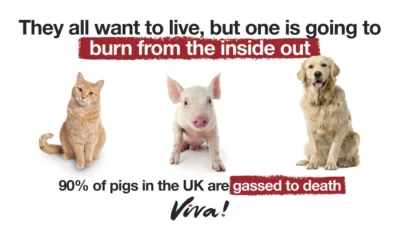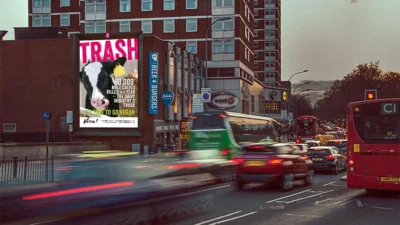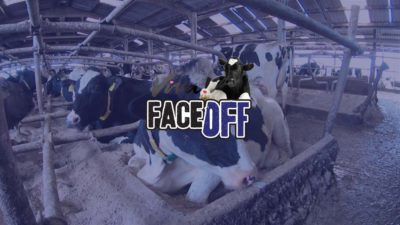Do feminists drink dairy?
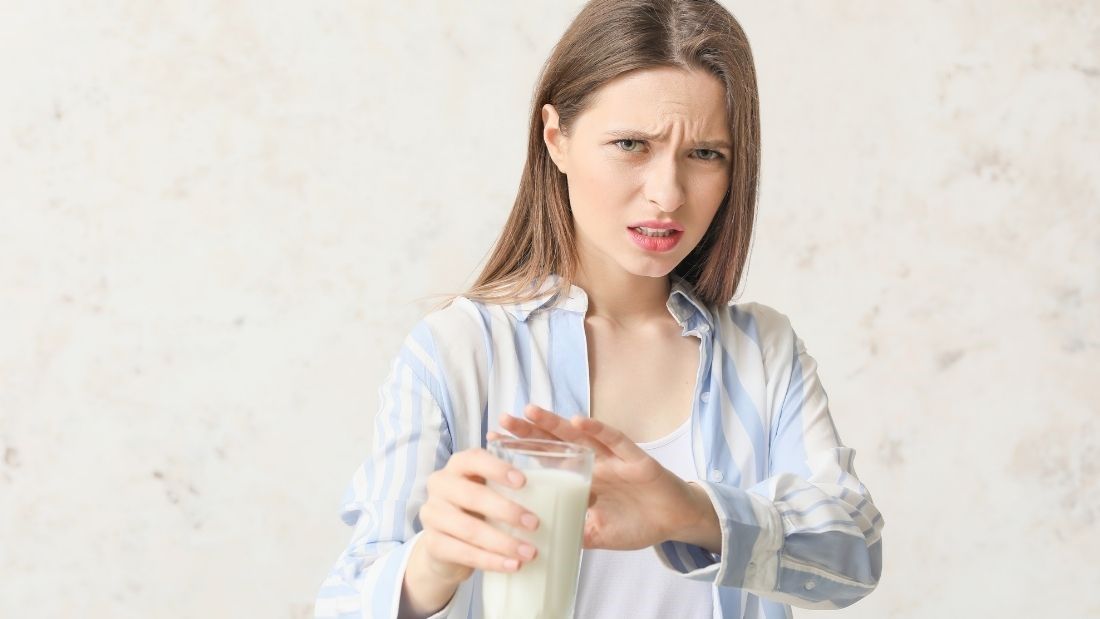
Some animal rights groups use adverts or street action to show people being treated like farmed animals – confined, beaten, tortured, mutilated and more – to encourage the public to rethink their attitudes towards cows, pigs, chickens and sheep. In Viva!’s Face Off campaign, we use virtual reality visors to expose the horrors of factory farming – once the blinkers are off, it’s impossible to put them back on! It’s simply a matter of changing your perspective.
Cows have different personalities, hold grudges, bicker and bond
Cows are sometimes portrayed as lacking intelligence but studies show that they play games, recognise different humans and have a variety of calls to communicate with one another. They have different personalities, hold grudges, bicker, bond and form long-term friendships. In the wild, mothers and daughters stay together for life. They can also feel anxious and depressed and their natural lives are very different to those they are forced to lead on a dairy farm.
Just like us, cows only produce milk after giving birth
At around 18 months old, a modern dairy cow will be confined and forcibly impregnated using restraining apparatus called a cattle crush (or ‘rape rack’). This is the beginning of her short and wretched life cycle – pregnancy, loss and lactation. Artificial insemination can be painful and traumatic and it’s not uncommon for inexperienced farmers to practise on live animals, inevitably leading to injuries.
Following a nine-month pregnancy, she gives birth and typically within days or even hours, her calf is snatched away. Separation is a painfully emotional experience for both calf and mother and she may bellow for days, calling for her lost calf. Again, once you witness this, it cannot be unseen. Female calves are replacements for the milking herd, males are seen as useless ‘by-products’ and shipped off to slaughterhouses (most via calf traders and marketeers).
She will be impregnated again while still lactating, meaning that for at least seven months of the year she is pregnant while being milked. Selective breeding and intensive farming methods have been used to increase average milk yields. So, whilst the number of UK dairy cows has decreased, the yield per cow has increased by 100 per cent since 1975, up from 4,100 to 8,214 litres in 2021. That works out at 27 litres or 48 pints per day, given that cows generally have an eight-week drying-off period when they are not milked. This is not done out of kindness, it is to allow her udder to repair and recover before the next round of pregnancy and milking. It’s all about profit.
The figures above reflect the average per cow, some may produce significantly more milk (up to 50 litres a day). Either way, it equates to six to 10 times more than a cow would naturally produce to feed her calf (four to six litres) and this takes a toll on her body. At any one time, a third of dairy cows have mastitis, a painful udder infection. Lameness is common and permanent nerve damage through problematic calving can affect her ability to control her back legs. To prevent her from doing the splits, farmers may shackle her hind legs together.
The enormous physical strain this places on her body is unsustainable, leading to complete physical breakdown. It’s the reason why dairy cows always look so skeletal – most of their energy goes into milk production – and they are physically wrecked by the age of five or six. Dairy cows can live for over 20 years, but they are killed at this young age when their productivity falls.
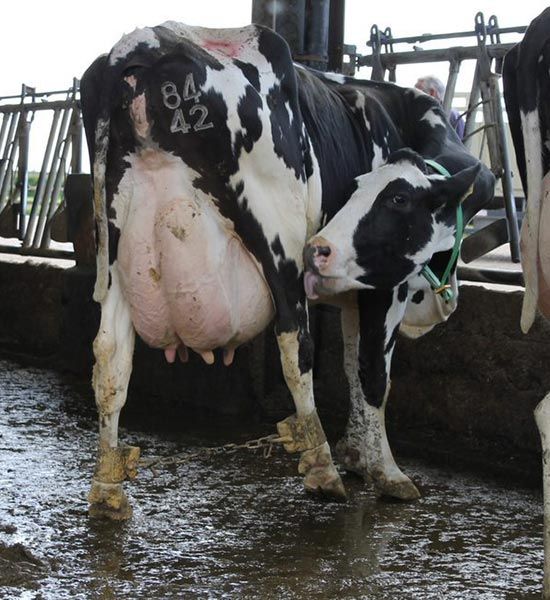
The hardest-working mothers
At the end of her short productive life, she may be suffering with infertility, mastitis, lameness or just poor milk production and will be culled, at a fraction of what would be her natural life expectancy, for use in low-quality beef products, such as pies, burgers, soups and baby food. Dairy cows are perhaps the hardest worked of all farmed animals, according to Professor John Webster, Emeritus Professor in Animal Husbandry at Bristol University.
Speciesism
Milk, then, is the product of the exploitation of the reproductive capacity of a female body. The reproductive freedom of women and animals are both intrinsically linked to patriarchy, capitalism and other forms of oppression. So why pick and choose which form of oppression to oppose? Increasingly, feminists are asking why it’s okay for humans to violently control an animal’s reproductive system while fundamentally opposing similar treatment of women? Assigning different moral values or rights to individuals on the basis of what species they belong to is called speciesism. American writer, activist and animal rights advocate, Carol J. Adams, says:
“I am a vegan-feminist because I am one animal among many and I don’t wish to impose a hierarchy of consumption upon this relationship.”
Key to feminist politics is a woman’s right to control what happens to her own body – the right to choose. It wasn’t until 1991 that rape within marriage became a crime – before this, the law implied that women were the property of their husbands. Deliberate acts of abuse on animals disgust most people so why do so many ignore this systematic, routine abuse of dairy cows? Adams, says:
“I would like to see reproductive freedom for all female animals, not just human females.”
Moo too
The #MeToo movement highlighted the prevalence of sexual assault and harassment of women, especially in the workplace. When animal rights campaigners used the hashtag on behalf of voiceless animals it caused consternation among some that the suffering of animals was considered comparable to that of women. The recent use of the phrase ‘Moo Too’, made popular by author Peter Lovenheim in the Los Angeles Times, was not meant to diminish the #MeToo movement but to emphasise the disturbing fact that exploitation of females is so systemic it even crosses species.
Speciesism, some say, is a prejudice similar to racism and analogies have been made between livestock farming and slavery. In her book The Dreaded Comparison: Animal Slavery and Human Slavery, Marjorie Spiegel says: “Both humans and animals share the ability to suffer from restricted freedom of movement, from the loss of social freedom and to experience pain at the loss of a loved one. Both groups suffer or suffered from their common capacity to be terrified, by being hunted, tormented or injured. Both have been objectified, treated as property rather than as feeling, self-directed individuals…”
Tying all these strands together, American author and activist Alice Walker said:
“The animals of the world exist for their own reasons. They were not made for humans any more than black people were made for whites or women for men.”
Milk comes from a grieving mother
We’re upset by stories of violence against women – rape, forced pregnancy, infants being snatched away from their mothers. Yet these are all routine practices in the modern dairy farm. A torturous cycle of physical and emotional torment is enforced upon the dairy cow until she breaks.
Find out more here.

